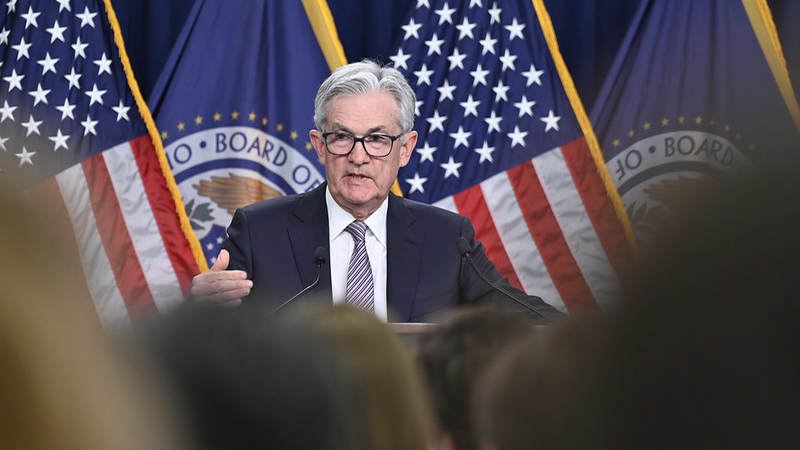The Federal Reserve maintained interest rates at the 5.25% to 5.5% range in its decision on 31 July, while acknowledging “some further progress” towards the US inflation goal of 2%.
Interest rates from the Federal Reserve have now stayed at this range for a year, with the Fed’s last rise on 26 July 2023, and no cuts since. However, markets have pencilled in a rate cut for September, with a second possible later in the year.
While there was no change this month, there was a change in language from chair Jerome Powell, including a recognition that inflation and unemployment figures “continue to move into better balance”.
While the Fed remains cautious over inflation, Matthew Morgan, head of fixed income at Jupiter Asset Management, warned that this could “prove to be misguided” with time if the job market weakens.
“The balance of risks to the economic outlook has shifted materially. Inflation is fast approaching target, and with lower inflation, real interest rates are biting. Weak company earnings releases, particularly in discretionary spending, suggest increasing consumer pressure. The health of the jobs market is increasingly concerning: leading indicators like the quits rate suggest that the recent rise in unemployment may accelerate,” Morgan said.
Typically, when the jobs market starts to weaken, it is hard to stop. One reason for that is that just as historically Central Banks raise rates too slowly, as was the case in 2021, they also usually cut too slowly. If the Fed waits until it has clarity on unemployment and inflation before cutting rates, it will be too late. The balance of risks today already suggests it’s time to get on with it.”
Ronald Temple, chief market strategist at Lazard, agreed that July showed enough promise for a cut, but thinks evidence remains strong for September.
“The FOMC has clearly telegraphed a September rate cut. Refinements in the language of the FOMC statement are important, especially the indication that the Fed is attentive to both sides of its dual mandate.
“While I believe a July rate cut could have been justified by slowing inflation, easing labour market tightness, and moderating growth, I think the case will be even more compelling in seven weeks.”
The Fed’s June ‘dot plot’ projection, which shows when members of the policy-making committee expect rates to change, showed just one rate cut for the rest of the year down from a projected three before, though many analysts feel two could be in the books.
Lindsay James, investment strategist at Quilter Investors, noted there will be two more inflation readings before the Fed makes its next decision on 18 September, but said there would nee dot be a “fairly drastic reading” to change course.
“While Q2 appears to have been stronger than expected for the US economy, there are increasing signs that it will slow as we move through the year. The labour market has moved into balance, with supply closely matching demand, and corporate surveys are pointing to a weakening picture in both manufacturing and services.
“Earnings season is now well underway, and companies from McDonalds to Visa have signalled that consumers are under pressure as big ticket items including mortgage costs and car loans eat into spending habits,” James said.
“A soft-landing still looks to be the most likely outcome for now, but Fed officials must be cognisant of the evidentially rising risks in the US economy which come at a time of both political upheaval and the threat of a regional all-out war in the Middle East. As such, the Fed may open the door to rate cuts in September, which is largely already reflected by markets.”










